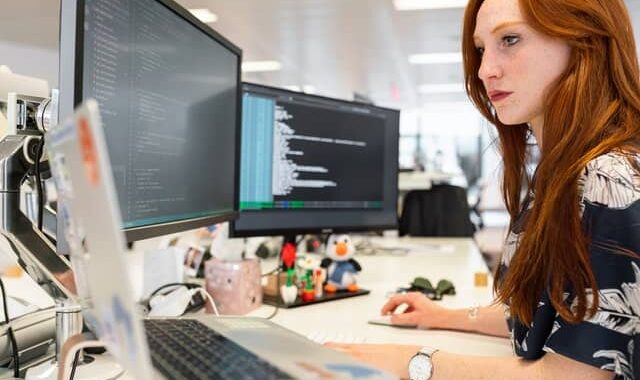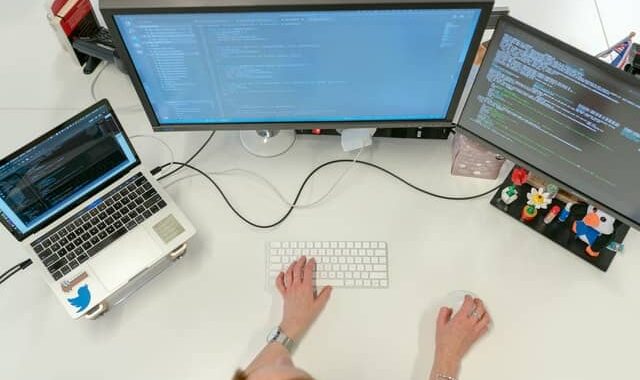
As companies begin to fully embrace the digital nature of the 21st century, application modernization has traditionally been a difficult, tedious task that can delay time and waste money for many businesses. The good news, however, is that there are new technologies emerging that is making application modernization easier and more cost-effective such as for example, simplifying business-processes through technology.
Before we analyze how to upgrade and modernize your current suite of HR applications, let’s understand what it is.
Related articles:
HR Software: The Ultimate Guide to Optimize Your HR Department
Future HR Technology Trends: The HR Application Framework
What is HR Application Modernization?
Application modernization is the operation in which companies migrate from their legacy systems or on-premise software to new, simplified solutions that modernize encryption, architecture, infrastructure and more. Companies today are often transitioning from clustered, or monolithic applications towards cloud computing, specifically SaaS based microservices to automate all their processes and have a better deployment of data migration.
With this transition comes application modernization challenges, many of which often stem from cost-effectiveness, lack of business agility, and feasibility. For large organizations that are used to traditional suites, and have been using them for decades now, the thought of switching without a direct ROI impact immediately may seem meaningless.
However, microservices and application modernization with SaaS-based products completely re-engineers the system to make it more streamlined and efficient through its many cloud computing resources. The initial investment in terms of cost, time and feasibility is practically nullified when compared to the characteristics of microservices and scalability of them.
Specifically looking at HR applications and modernization, legacy applications don’t offer the same connectivity, collaboration and broad-based solution that is prevalent in modern HR systems, like that of flexible and agile solutions referred to as composable business applications.
Why Modernization is Important & the Benefits
Now with the knowledge of what application modernization is, let’s analyze some of the key benefits and why it’s important to regularly update and upgrade your HR applications.
Firstly, traditional HR applications are incredibly restrictive, unscalable and impersonal. On the other hand, composable HR applications allow you to freely integrate HR tools into your holistic HR application and let you scale, deploy, and personalize the experience to best suit your needs.
Legacy, or monolithic applications don’t offer the same level of agility and freedom due to its structure and how they are built. As monolithic applications are built as a package, personalizing them would require an enormous amount of work to deviate from the original product. Given this challenge, it is costly and time consuming as it adds challenges for not only IT in the lack of having a data center but also modern HR in regards to the employee experience.
Modernizing your HR applications will greatly benefit your organization by improving reliability, up-time, agility, increased functionality and much more.
HR application modernization allows organizations to secure and leverage its investments internally while offering the end user a functional, positive experience where they can leverage the abilities of new technology to a cloud server. Implementing a solid strategy to seamlessly optimize and upgrade your HR applications is imperative so that you can reduce wasted time, expenses and still be able to access your required service-management.
Moreover, this phase to upgrade and improve is usually best done when there is a digital transformation occurring within the organization as this will help bridge the gap between legacy and modern applications to fit in an ecosystem that is built for the modern age.
Another benefit of modernizing your HR applications is the ability to personalize and integrate whatever service you choose for cloud management. Allowing users to pick and choose which services they can integrate into their HR suite and giving users instant access to resources and materials through the cloud makes this a preferred solution for many organizations. This solves the need for complex, legacy systems that require trained professionals and gives you back time to put it back where it matters.
Ultimately, the benefits of modernizing HR applications are vast but can be summarized to the following key areas:
- Automation
- Time-savings and speed
- Eliminating redundancy
- Improving the employee experience
Data protection and security
Where to Start
Once your organization has decided to upgrade your HR applications, it’s important to break this transformation into digestible steps to ensure they are scalable and fit accordingly to your user-experience.
Initial Assessment
Before this transition, an initial assessment is a great way to understand what needs to be upgraded and how the current systems are performing. This way, you can compare the performance of the modernized HR application system to the legacy, monolithic applications.
Once you declutter and scout the current system, you can rank the HR applications based on the returns they provide and how easy they are to use. You can also think about what can be done better with those applications and then find use-cases where newer, modern applications that can effectively use innovative features will be impactful.
Cloud Migration vs. the Composable Application Approach
Once you’ve finished the initial assessment, you can decide on which method you will use to modernize your HR tech stack. The two methods we will talk about here are the cloud migration and composable application approaches.
A reason you may choose to go with cloud migration is because legacy applications aren’t usually cloud-compatible, meaning, they don’t offer the same functionality and benefits that newer HR applications do. However, this process can be daunting as there are a plethora of options within the cloud migration process. From cloud computing, choosing the right cloud service provider, finding different cloud hosting options and much more. Ultimately, you want something that is easy to use, offers the functionality you need and can adapt to your growing business.
That’s where the composable approach comes in. The composable business application approach lets you avoid costly implementations or deploying in-house applications which could take forever to develop. Instead, you get to keep the same systems that are already adequate from a functionality standpoint and give it a fresh interface. Integrate several applications to a universal interface where all user data from multiple HR and business functions are available for reporting, workflows and self-service capabilities.
Mobile-First
One key thing to look out for is the ability to use cloud services and HR applications via mobile devices. As employees begin to shift to a more dynamic role, giving employees the flexibility to operate and work using phones can greatly improve the employee experience. One important point to focus on is data-security of this solution. Cloud security is something that many companies are placing a major focus on now a days because of this advancement of technology. As an HR manager, one has to select the right HR solution such as a software that can securely provide a solution to being cloud-based.
Current and Future Trends
With recent developments in the HR application space, there are some interesting advances within monolithic application modernization. Those being composable applications that utilize integration capabilities to centralize all HR functions while allowing organizations to choose which applications work best for their business. All this while avoiding the costly cloud migration or a rip-and-replace strategy. Organizations choose this route for flexibility, density, agility but more importantly, budget limitations.
This upcoming technology also allows companies to experience benefits like the data privacy features as well as the flexibility that comes with the composable approach. All your information and data are centralized in one place, eliminating the need for manual sharing of sensitive data through the usage of the legacy software
Conclusion
Ultimately, upgrading and modernizing HR applications will allow your organization to stay competitive and improve the employee experience. One great way to achieve the benefits upgrading your HR applications it to use PeopleSpheres, a new type of HR System that allows you to integrate and personalize your experience to ensure you can leverage your strengths and get an ROI on your investments. This software deals with integrations of all your software into one Saas software. Through this cloud strategy, legacy apps will a problem of the past. Companies are constantly evolving with the demanding market of computing services. Not only will PeopleSpheres solve this problem, but it will make it more suitable for your company to scale up in all your operating systems.



-640x380.jpg)
